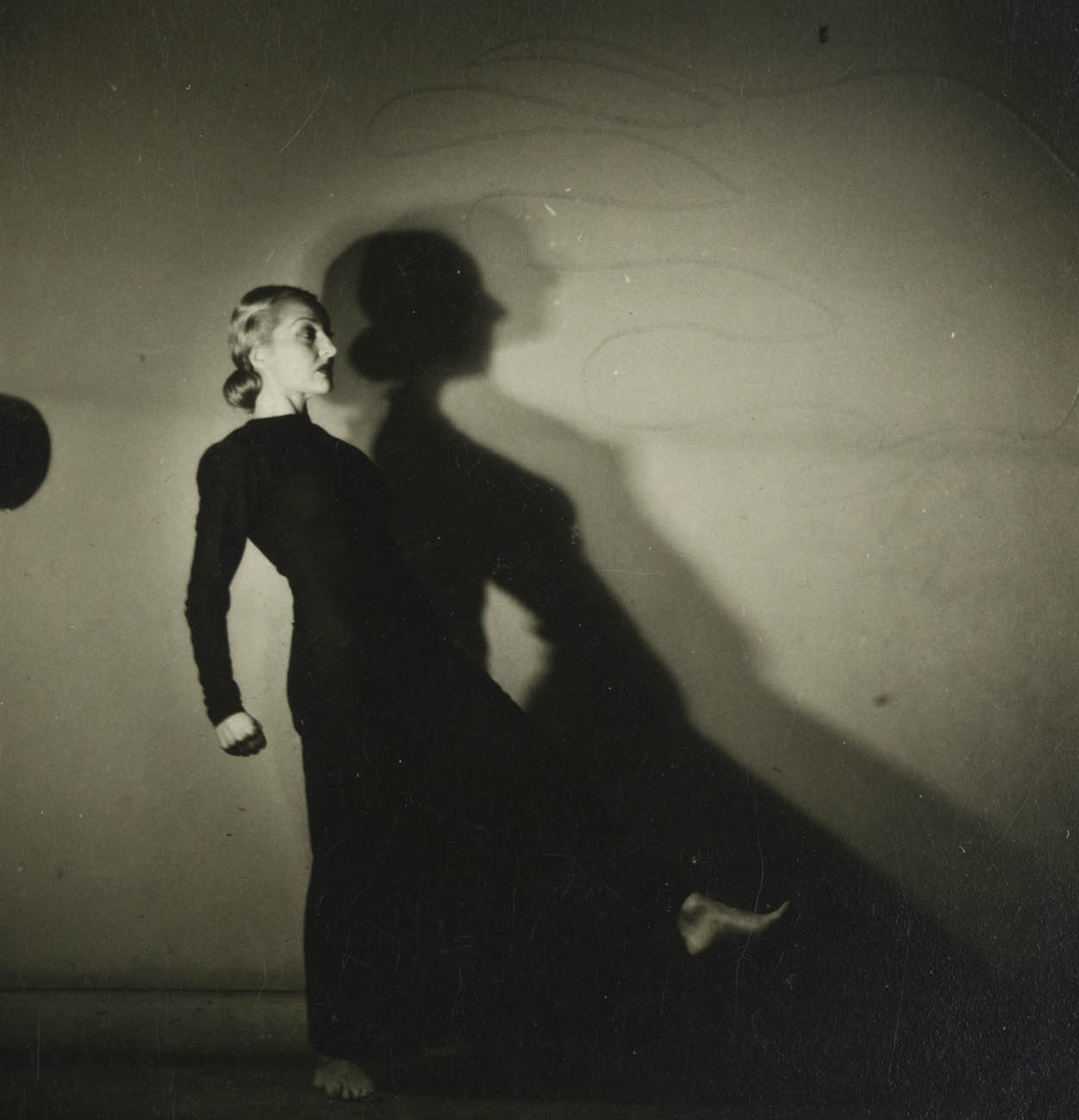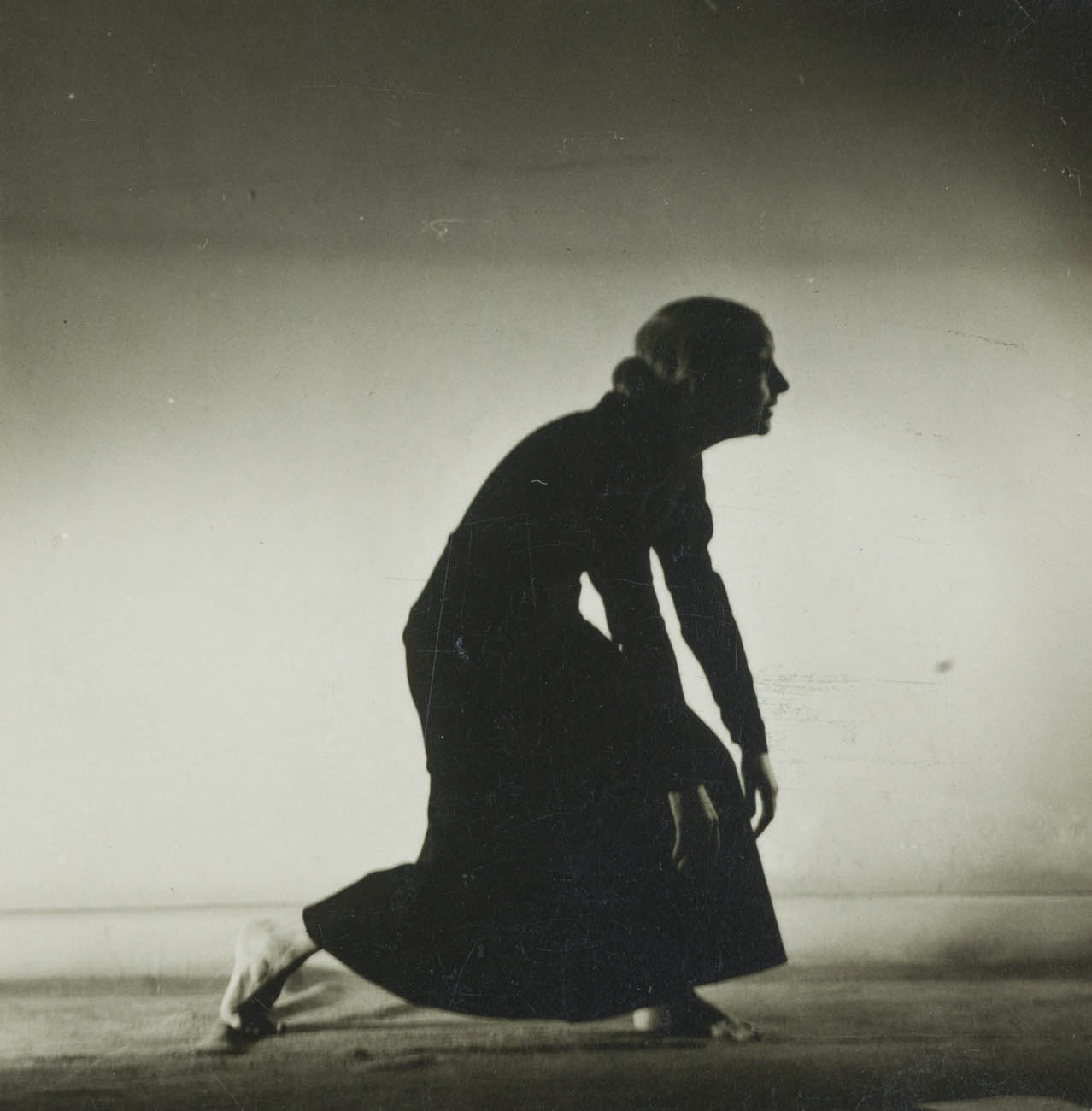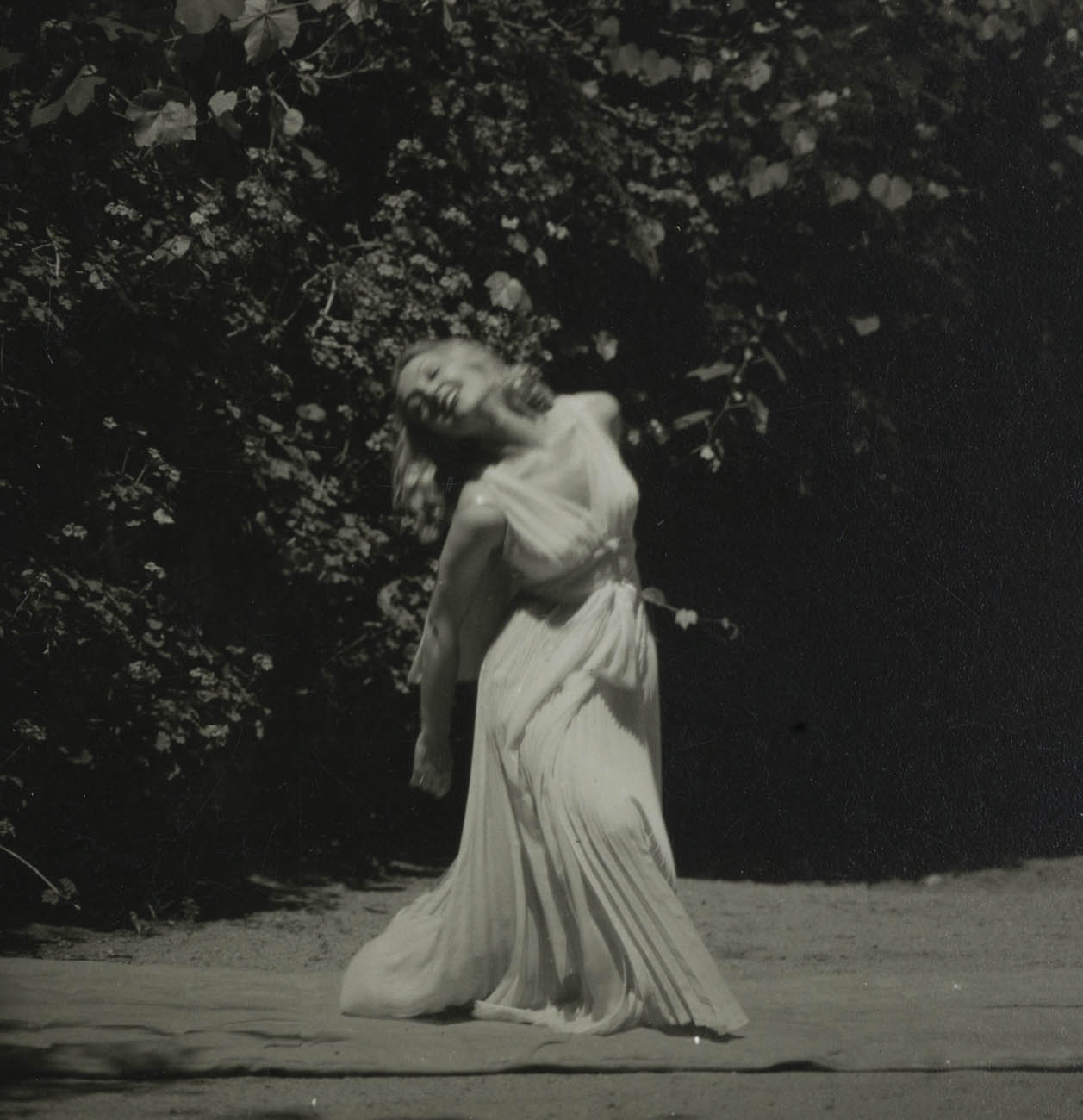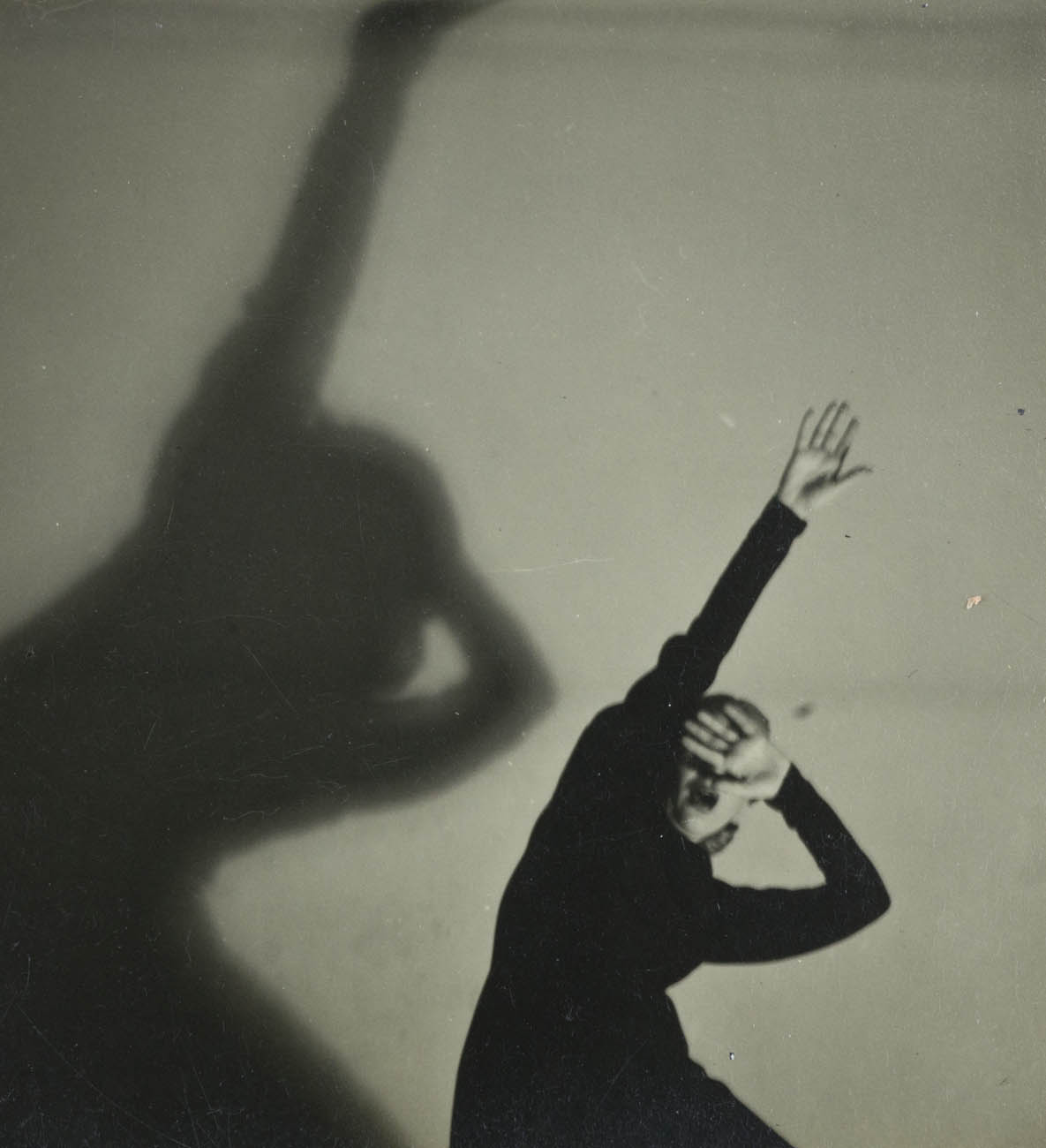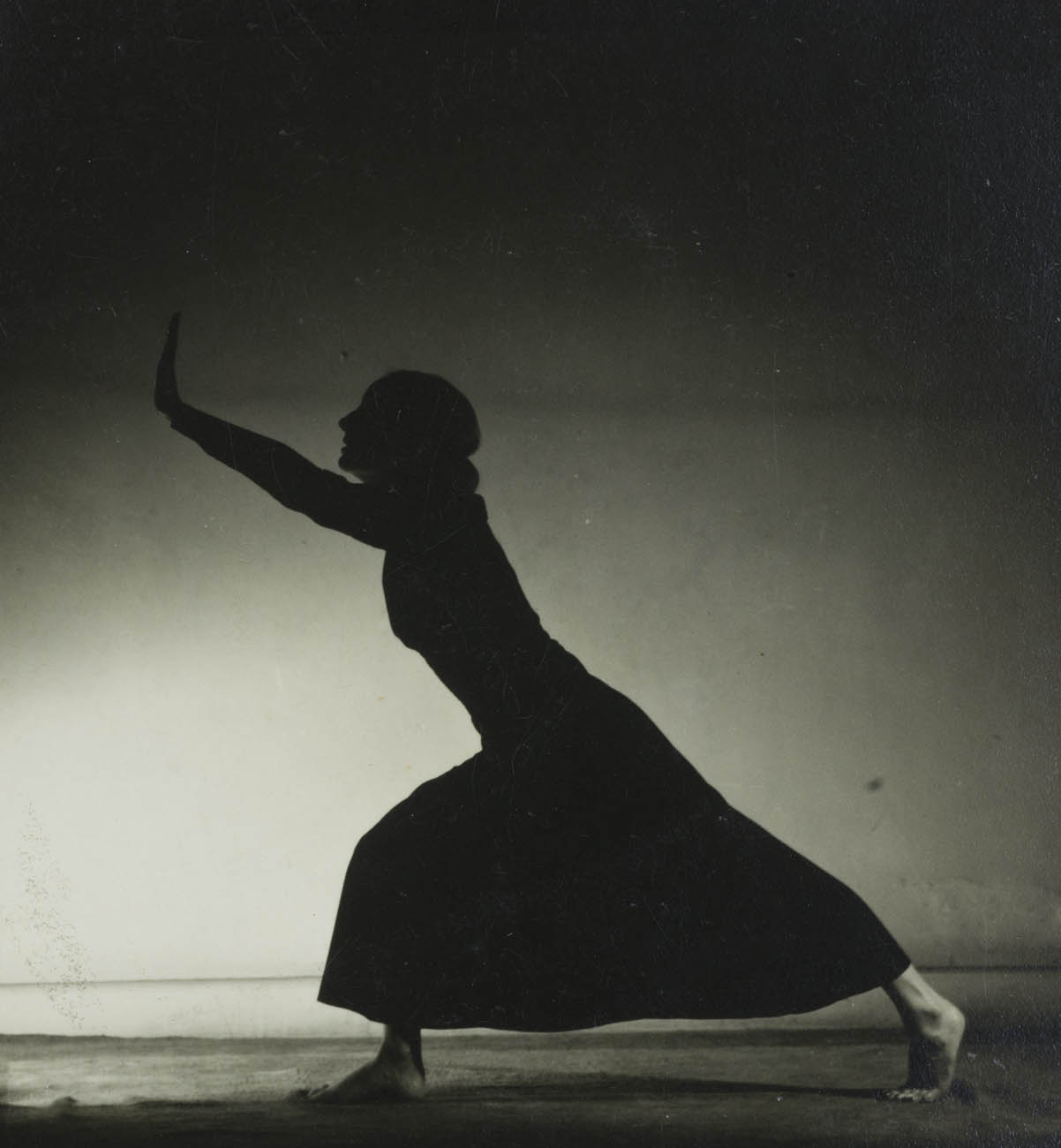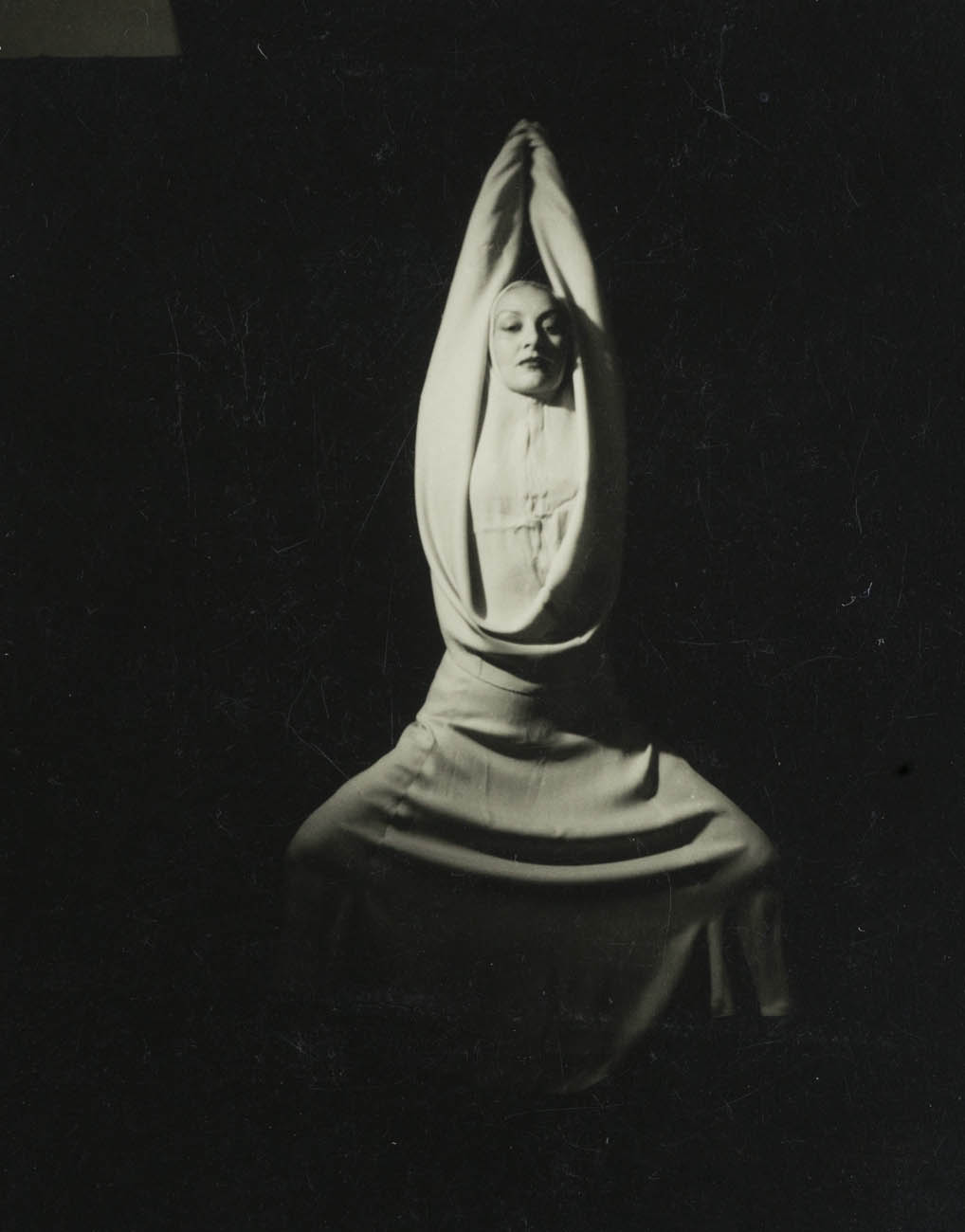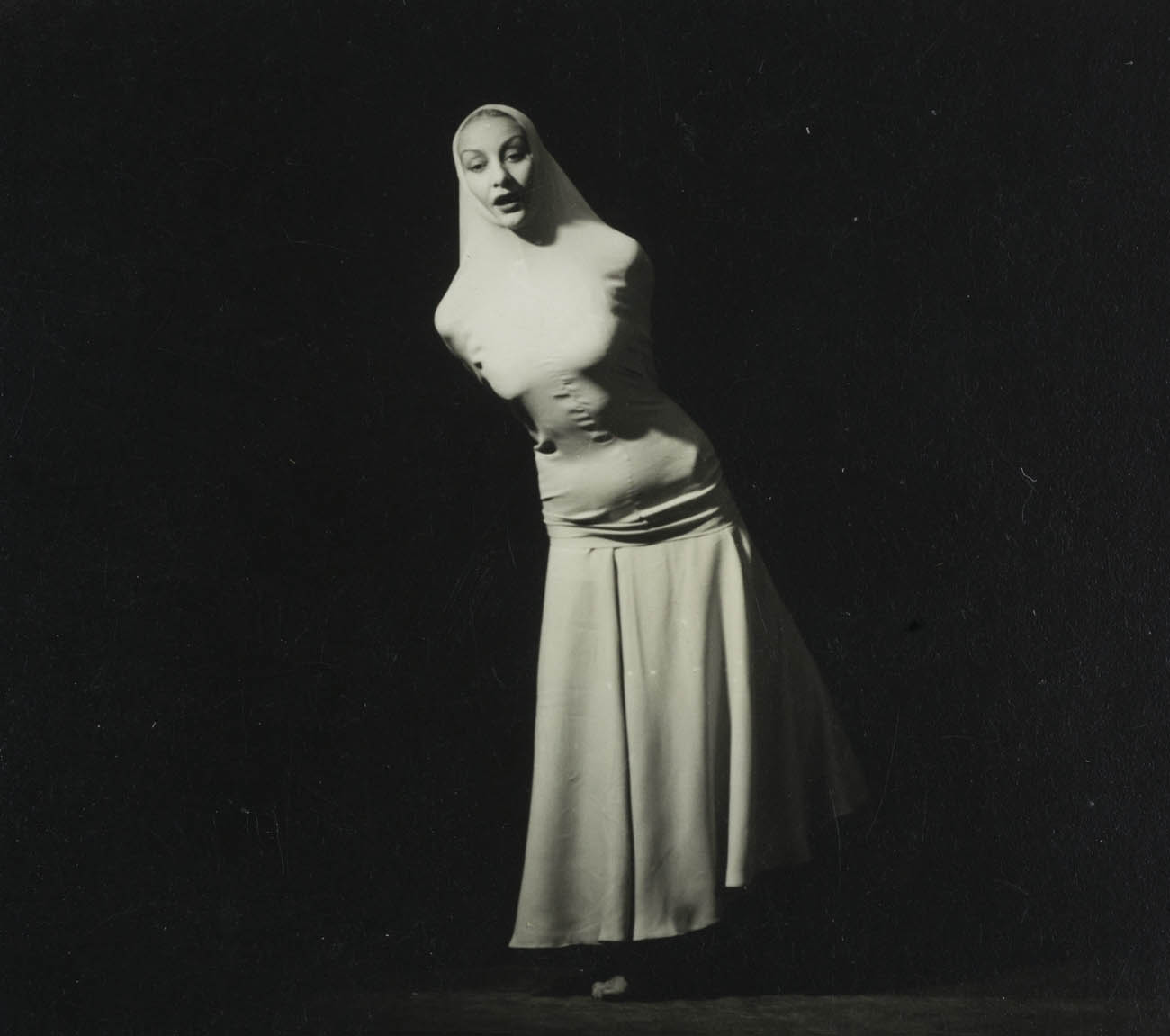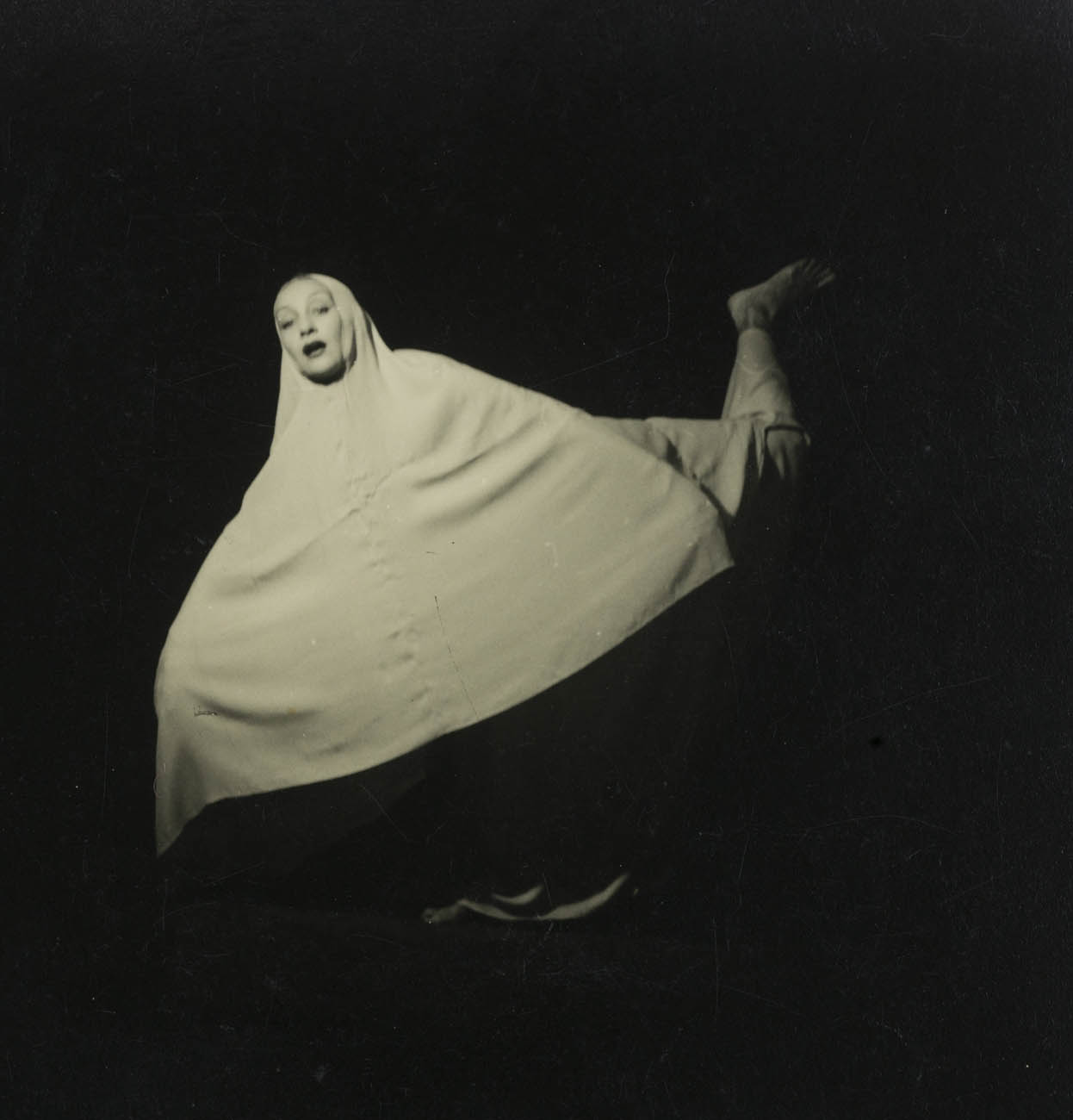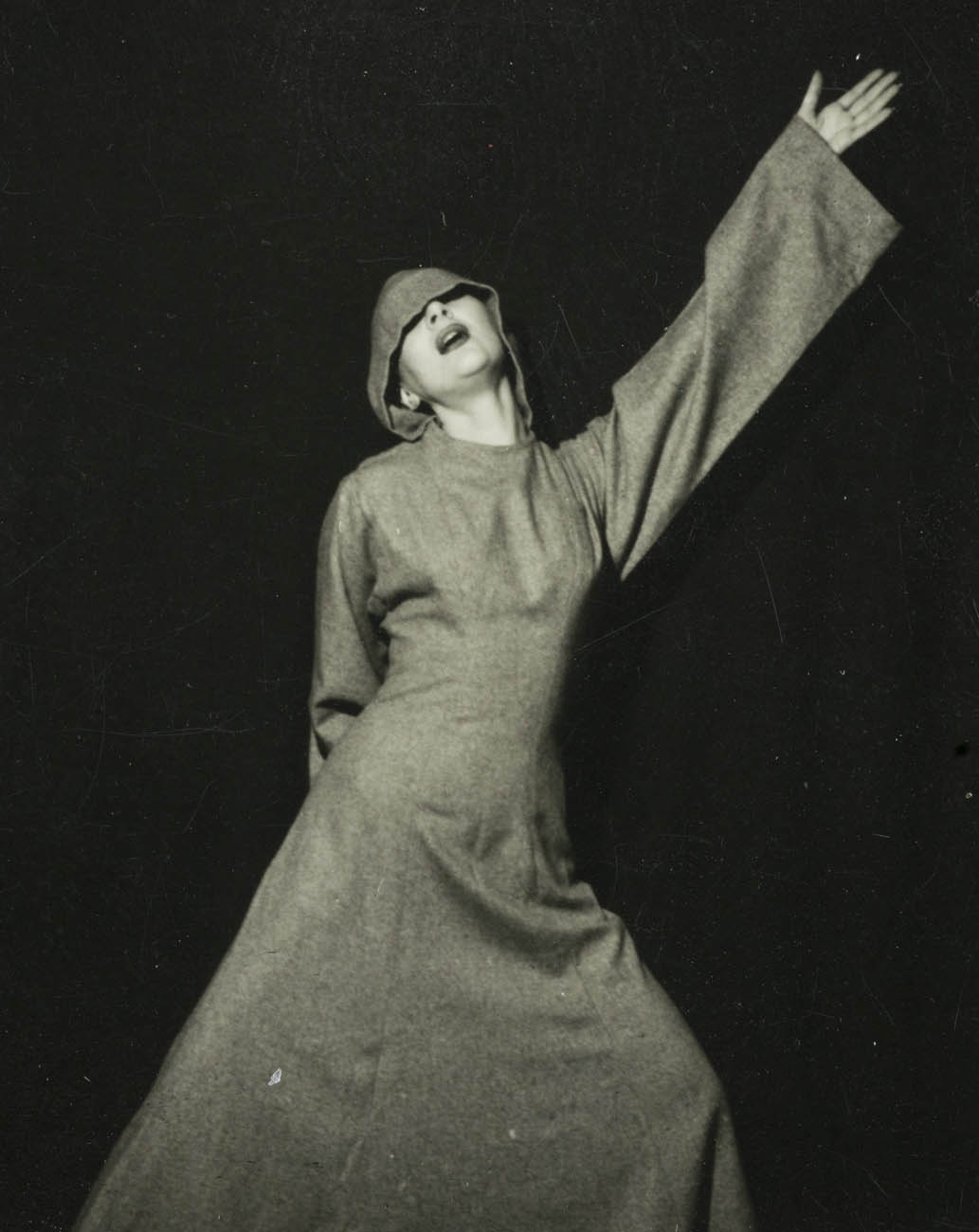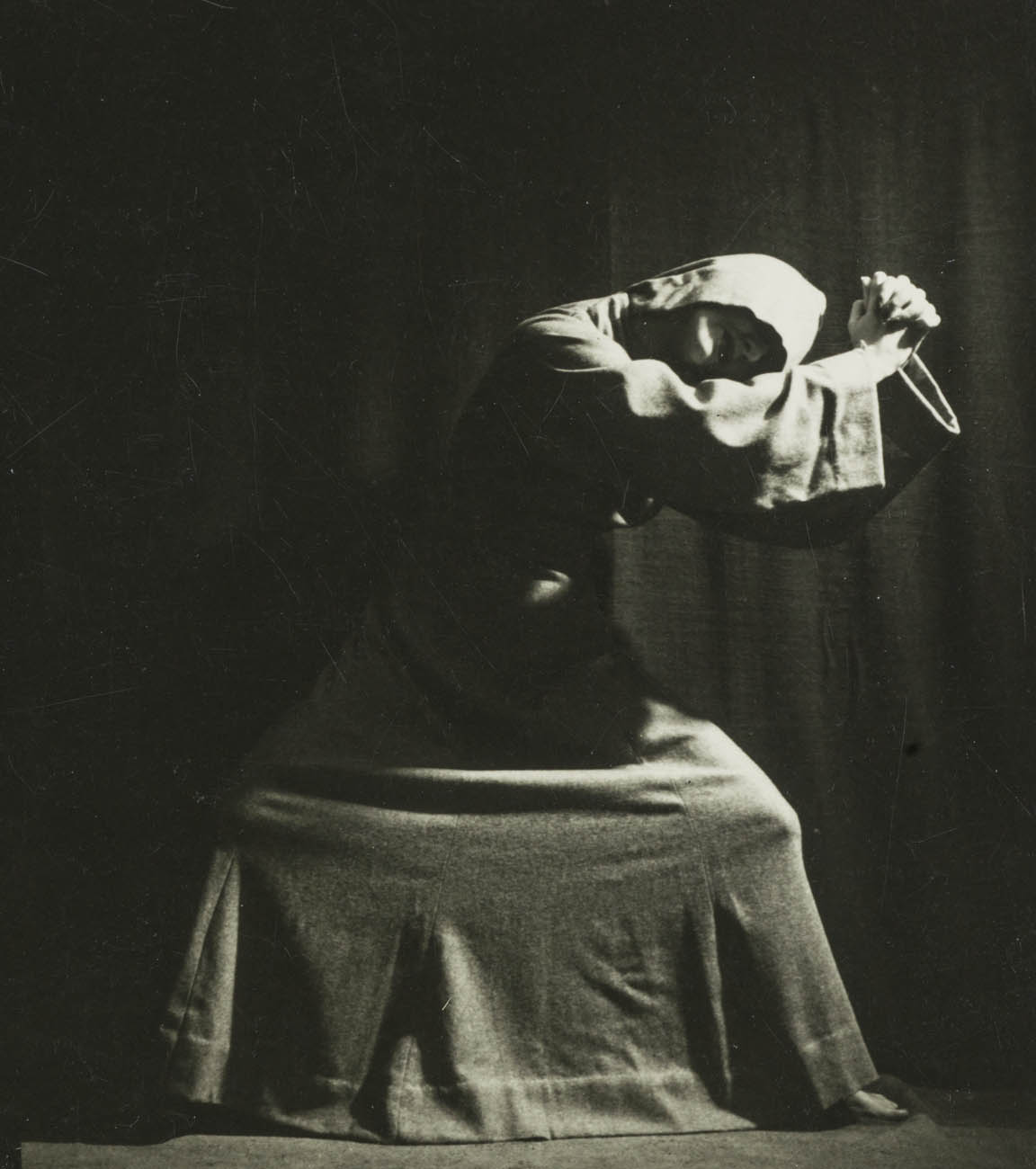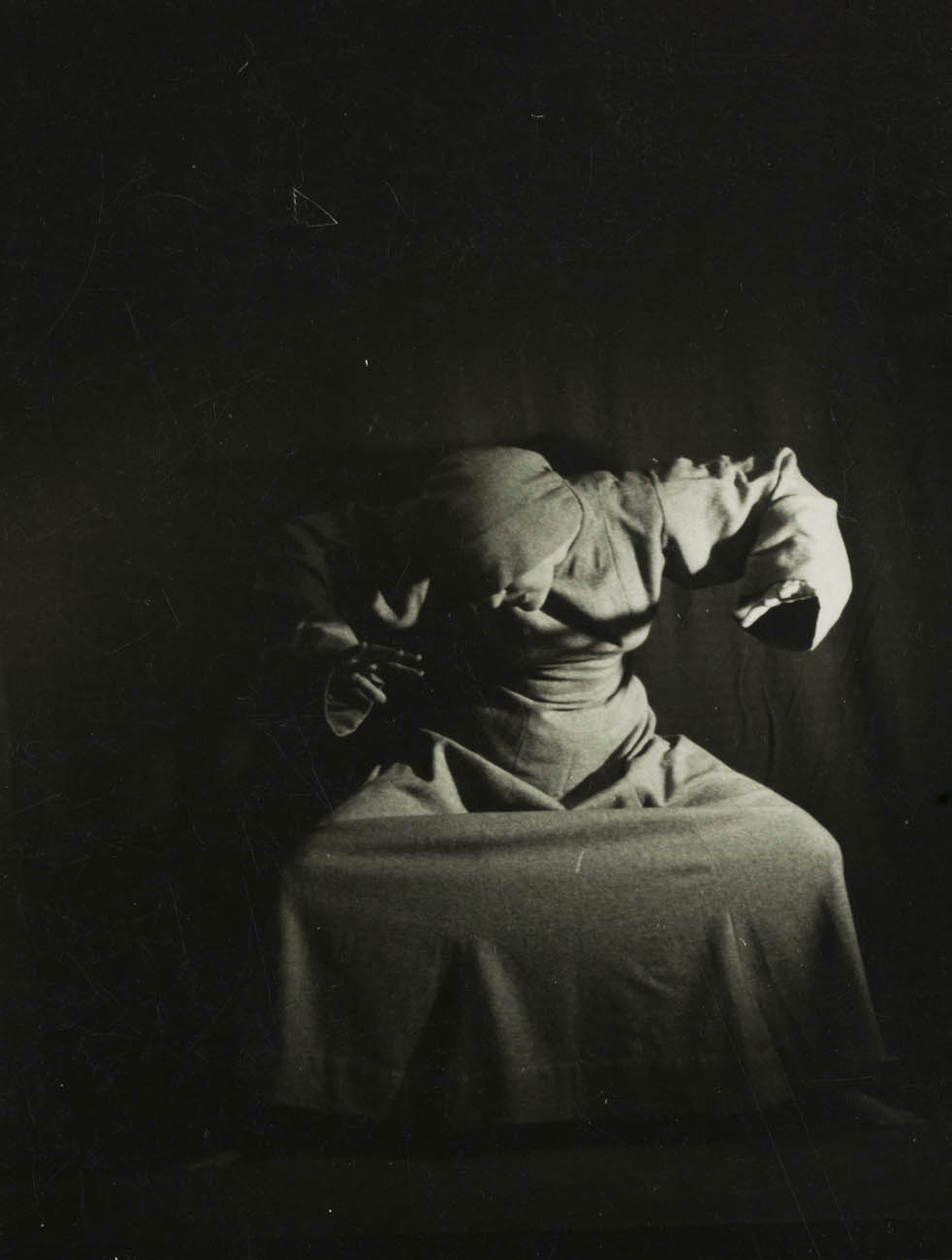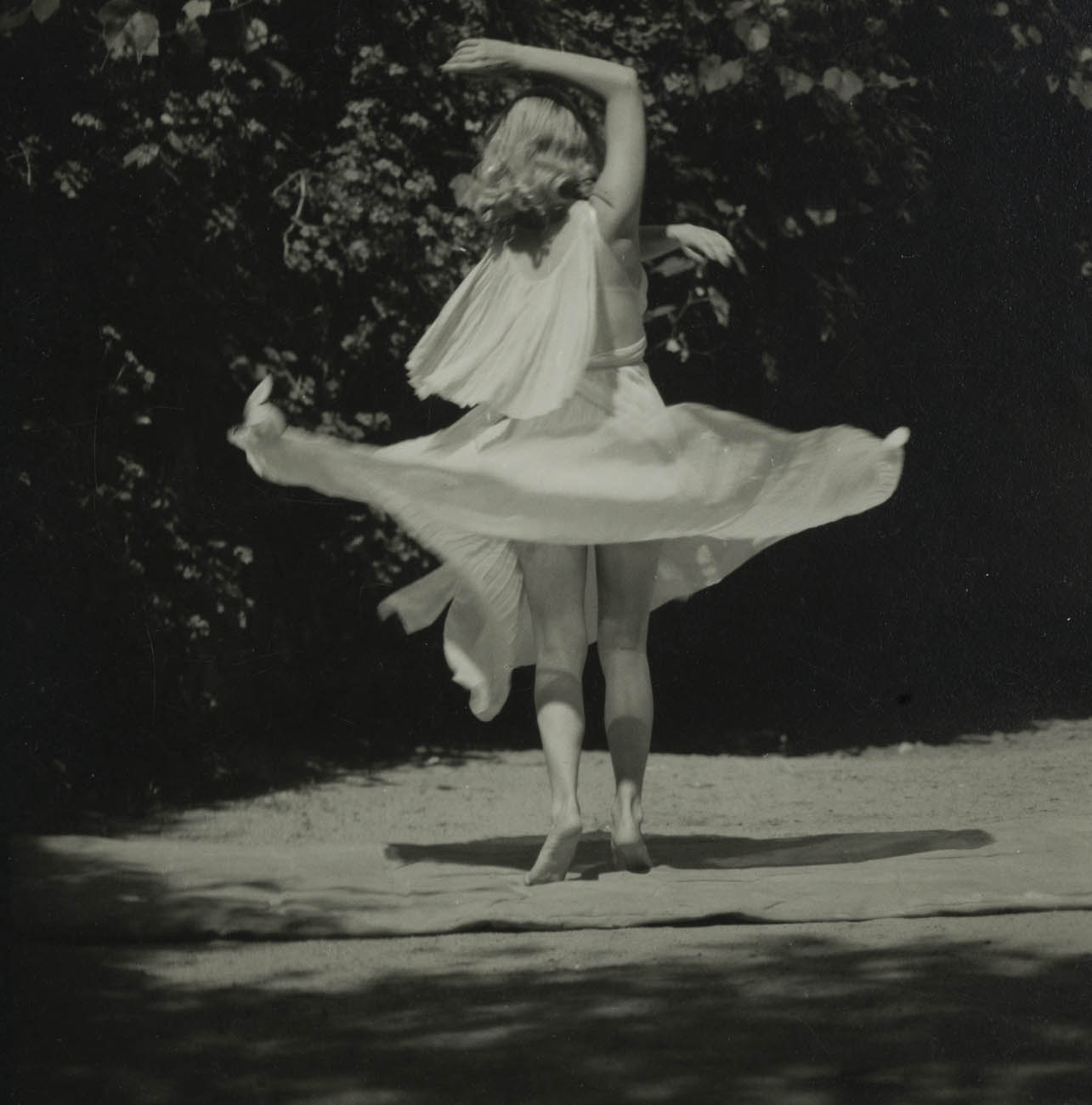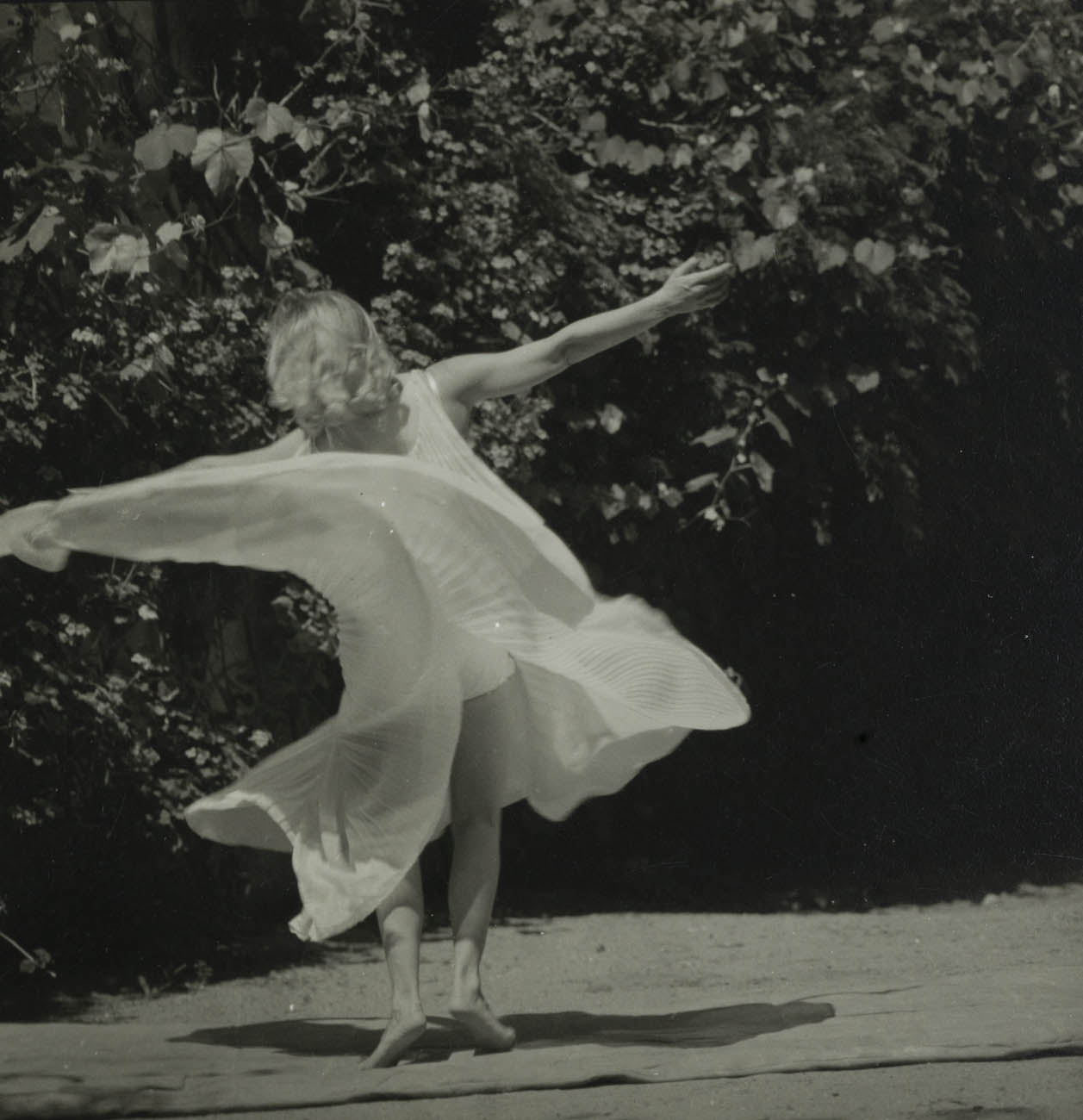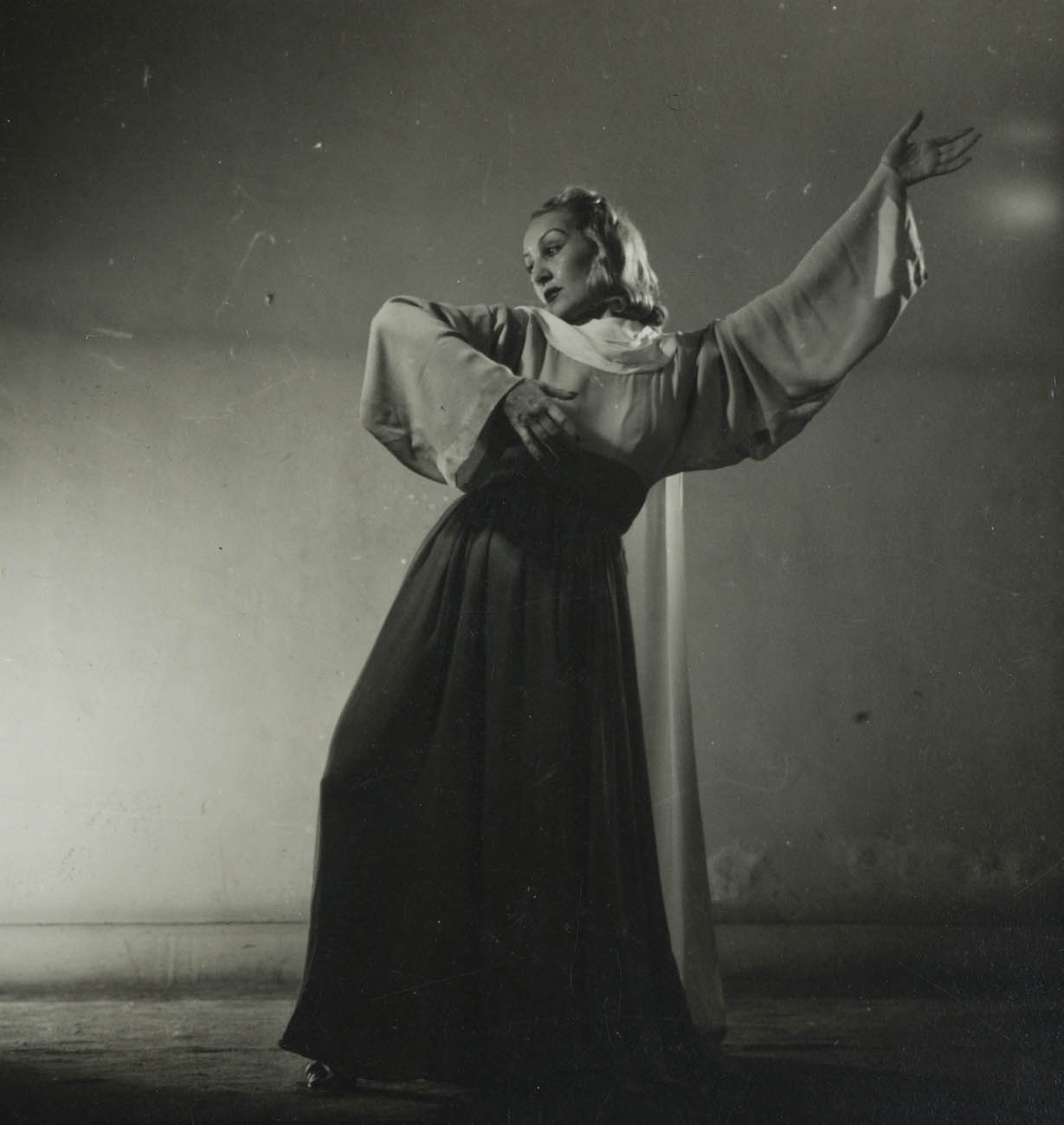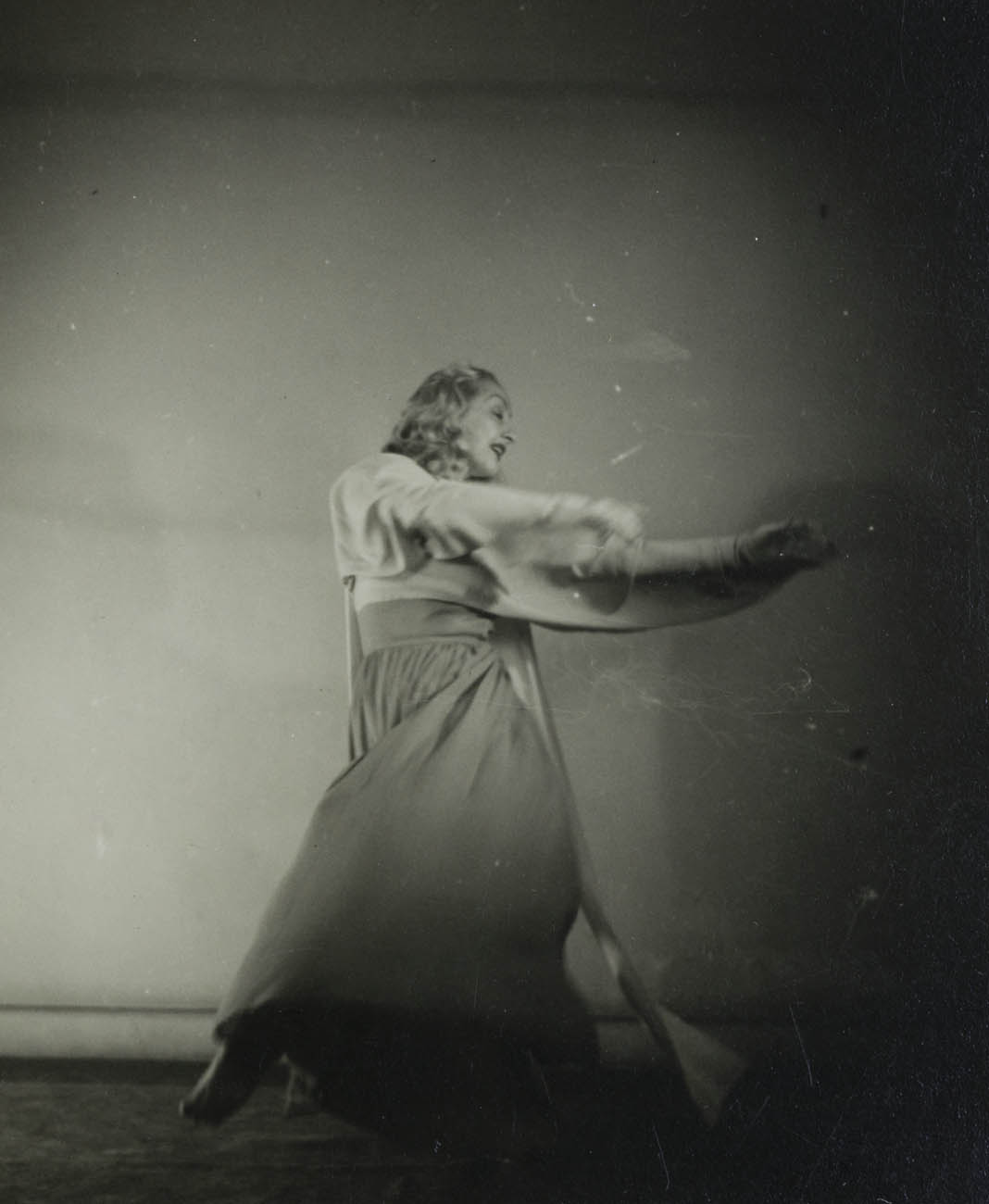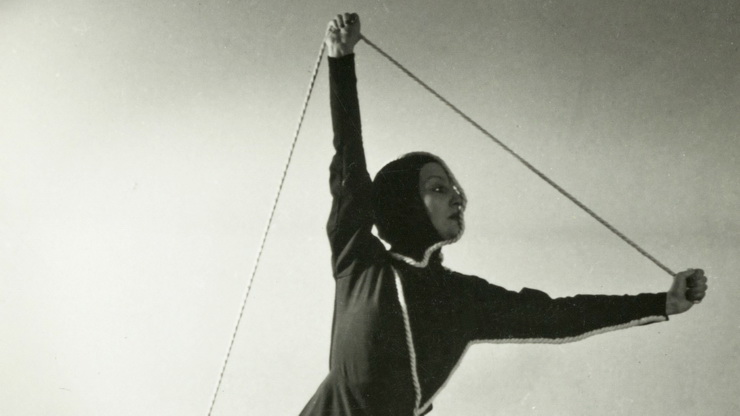about
This exhibition recovers the work of Biyina Klappenbach (Buenos Aires 1904-1994), a multi-disciplinary artist, pioneer of Modern dance in Argentina in the 1930s as well as an avant-garde visual artist. Her work and legacy were completely forgotten until recently, when the providential finding of a portfolio of photographs taken by iconic modernist photographer Anatole Saderman in the late thirties/early forties allowed us the only existing glimpse into her performance work. Around sixty contact prints made directly from negatives by Saderman and some larger prints were found by Alfredo Srur, an “archaeologist” of early photography, while searching for other material. It must be noted that most negatives are now lost, so these images are the only existing record of Biyina’s work, as well as of this series of photographs by Saderman.
Biyina Klappemnbach was the great grand-daughter of Bartolomé Mitre, Argentina’s president in mid-XIX century and founder of the country’s main newspaper. She received training in Europe during the twenties and came in close contact with avant-garde movements in the visual arts as well as with emerging alternative approaches to the use of the body in dance, taking classes with Marie Kummer. Back in Buenos Aires, in the mid-thirties she was presenting solo performances where she conceived all aspects of the work, not only choreography and movement but also set and costume design as well as music. In 1936 she presented a program of three pieces at Teatro Lírico in Buenos Aires. She also developed a practice as an exhibiting painter working in a post-cubist style. Her paintings are lost, but there are some black and white reproductions of them in the archives of the Museum of Modern Art of Buenos Aires.
One of the most solid arguments for the relevance and innovative quality of her work —considered within the context of Argentina in the first decades of the 20th century— is found in A History of Art from Argentina, published in 1944 by influential art historian José León Pagano (Buenos Aires, 1875-1964). This is how he describes Biyina:
“Biyina Klappenbach: an exceptional figure in our milieu, due to the quality of her intellect and her organizational spirit. She is a living example of the unity of the arts. She studied painting in Paris under the guidance of André Lothe. She traveled extensively and became acquainted with cultures from the present and the past. Poetry, dance, music, visual art fertilized her refined sensibility and multiplied the belvederes in her inner landscape, where she acts as sole driving force. It is surprising to see such energy in a creature so soft and feminine. She conceives and executes enterprises so ambitious that would make many men’s wills recoil. This woman, all grace, takes upon her to achieve enormous initiatives in terms of their aesthetic and technical nature, planning her creations efficiently and having many different elements converge to one end. Whoever has attended one of her art parties will be able to tell about her amazing creative and organizing abilities. We would not make justice to her work by describing it as “dance shows”. We would not approach their real meaning. Because Biyina Klappenbach herself is all the spectacle. From the selection of the music to the idea for the set design, the costumes, the distribution of colors, all of it is her work. And finally, there is her intervention as sole center of the performance. It is her, just her. She has a style: her own, towards which converge several expressions of the arts. As a painter, her work grants her a place within the most avant-garde group.”
In a previous three-volume book The Art of Argentineans published some years earlier, Pagano had already included Biyina Klappenbach, in the special section of the last volume entitled The Female Contribution where he listed the most relevant Argentinean women painters of the time.
These photographs of Biyina Klappenbach show a true collaboration between photographer and subject. Biyina is by no means a passive object to be portrayed, she is in control of the composition, of the poses and uses wardrobe and occasional props to fulfill an expressive or an abstract impulse. Often there is a well-planned use of diagonals and triangles.
In the fifties and sixties Biyina stopped performing and developed a career as set and costume designer for theatre plays. She collaborated with some of the more respected actors and directors of the time, including Ulyses Petit de Murat and Marcelo Lavalle, with whom she co-wrote a version of Hamlet. Biyina was also the set designer for the first TV show about fashion in Argentinean television which started in 1959 and became a great success, being aired for a decade. It provided Argentina’s middle-class with their first chance to see live models wearing haute couture in a fashion show.
About Anatole Saderman:
(Moscow 1904 – Buenos Aires 1993) At age 14 his family emigrated to Berlin escaping the harsh living conditions for Jews in Russia. With the ascent of Nazism Anatole Saderman’s family emigrated first to Paraguay, and then to Uruguay where he took a job as a street photographer’s assistant and learnt his first photographic skills taking portraits. In 1927 he moved back to Paraguay and opened his first photo studio, named Electra. Five years later he emigrated and settled in Argentina, where he eventually became an active member of artistic and intellectual circles and a celebrated photographer. He was part of “Carpeta de los Diez”, along with Anne Marie Heinrich, Horacio Coppola and others, a group of photographers who met regularly to discuss issues related to the medium. He had a long working life, developing portfolios devoted to close-ups of nature, urbanscapes and also specializing in portraiture including famous artists such as Pier Paolo Passolini and Jorge Luis Borges. He is considered one of the iconic figures of Modernist photography in Argentina, his works are in the collections of Museo Nacional de Bellas Artes, Museo de Arte Latinoamericano de Buenos Aires (MALBA), among others.

